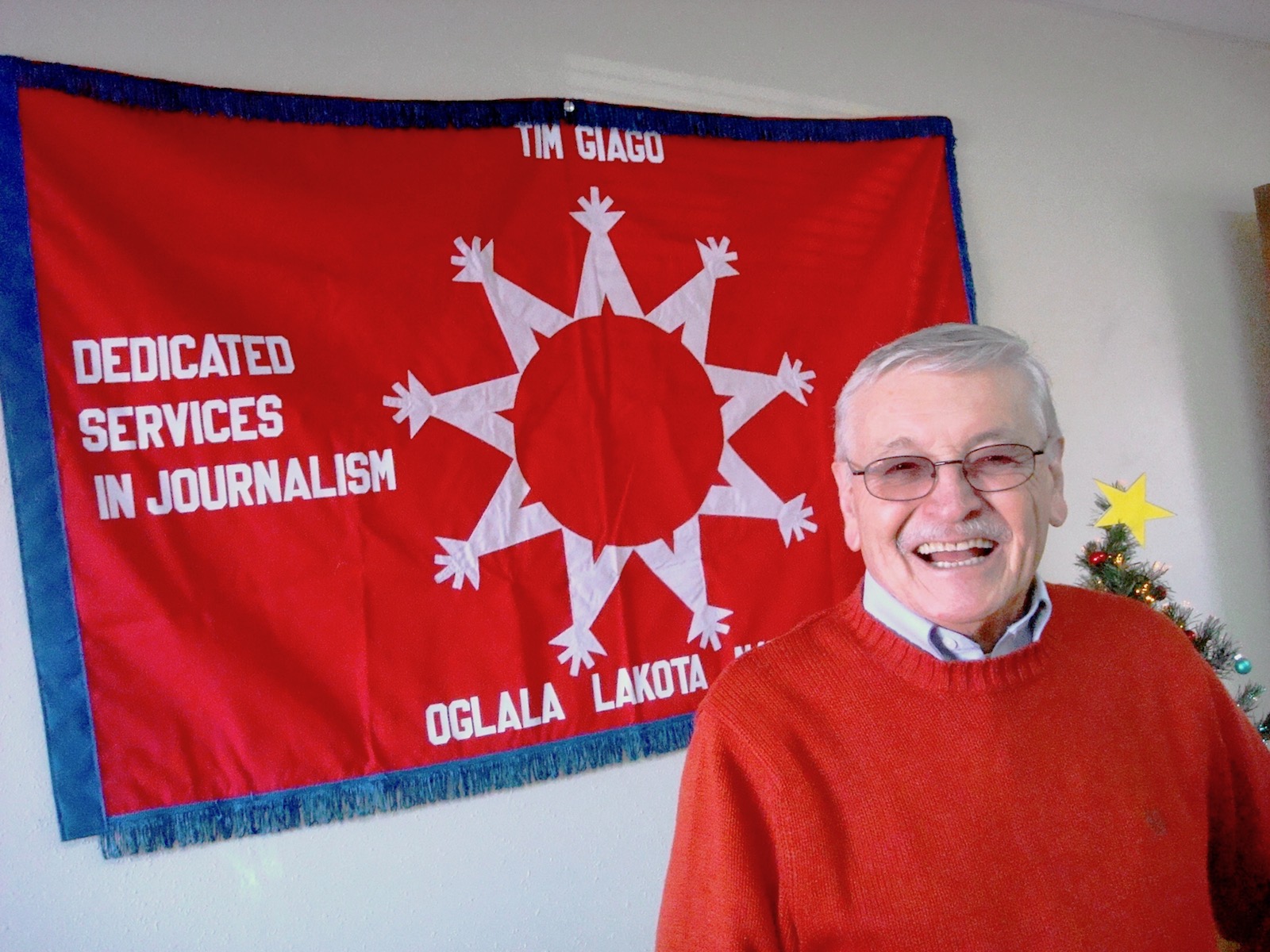Indianz.Com > News > Tim Giago: Confronting racism against Native people in the media

Notes from Indian Country
South Dakota’s media needs to examine itself
Monday, December 28, 2020
The Kansas City Star’s top editor apologized last week for the newspaper having “disenfranchised, ignored and scorned generations of Black Kansas Citians.”
Mike Fannin, who has worked at The Star since 1997 and served as its top editor since 2008, wrote in a letter to readers titled “the truth in Black and white” that the Star had “robbed an entire community of opportunity, dignity, justice and recognition.”
I think newspapers like the Sioux Falls Argus Leader, Rapid City Journal and all of the other daily and weekly newspapers in South Dakota should evaluate their lack of coverage of minorities, particularly Native Americans, in their news reporting over the years. They would also be guilty of having “robbed an entire community of opportunity, dignity, justice and recognition.”
Many years ago a reporter from the New York Times came to South Dakota and did a story on my then newspaper, The Lakota Times. The premise of the story was that Native Americans started their own newspaper in order to get the news coverage they had heretofore been denied. He was a good reporter, but he missed one segment of the story that was most important. He did not go to any of the big dailies in the state and ask any of their editors why Native Americans had to start their own newspaper.

Tim Giago (Oglala Lakota) is the founder of the Native American Journalists Association and of Indian Country Today. Contact him at najournalist1@gmail.com.
Note: Content © Tim Giago
Search
Filed Under
Tags
More Headlines
Native America Calling: Assessing current health threats to Indian Country
‘I am finally going home’: Leonard Peltier released from prison after nearly five decades
NAFOA: 5 Things You Need to Know this Week (February 18, 2025)
Chuck Hoskin: Cherokee Nation supports our artists
Native America Calling: Native activism marks victory with Leonard Peltier’s release
Native America Calling: What Indigenous people in Greenland really want
Native America Calling: Traditional love stories
RECAP: National Congress of American Indians continues big meeting in DC
Native America Calling: Honoring artists who demonstrate community spirit
RECAP: National Congress of American Indians opens big meeting in DC
‘We stand firm. We hold our ground’: Federal freeze impacts tribal gathering in nation’s capital
AUDIO: The 2025 State of Indian Nations in Washington, D.C.
RECAP: National Congress of American Indians hosts State of Indian Nations
Chuck Hoskin: Cherokee Nation empowers new generation of agriculture stewards
Native America Calling: The State of Indian Nations in 2025
More Headlines
‘I am finally going home’: Leonard Peltier released from prison after nearly five decades
NAFOA: 5 Things You Need to Know this Week (February 18, 2025)
Chuck Hoskin: Cherokee Nation supports our artists
Native America Calling: Native activism marks victory with Leonard Peltier’s release
Native America Calling: What Indigenous people in Greenland really want
Native America Calling: Traditional love stories
RECAP: National Congress of American Indians continues big meeting in DC
Native America Calling: Honoring artists who demonstrate community spirit
RECAP: National Congress of American Indians opens big meeting in DC
‘We stand firm. We hold our ground’: Federal freeze impacts tribal gathering in nation’s capital
AUDIO: The 2025 State of Indian Nations in Washington, D.C.
RECAP: National Congress of American Indians hosts State of Indian Nations
Chuck Hoskin: Cherokee Nation empowers new generation of agriculture stewards
Native America Calling: The State of Indian Nations in 2025
More Headlines